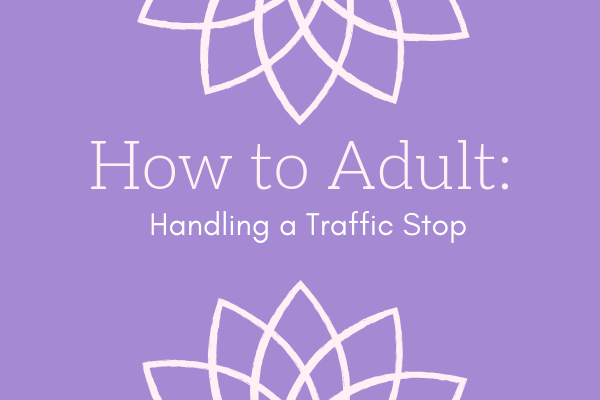
Photo by Made in Canva
How to Adult: Handling a Traffic Stop
Jaden McKinnon, Staff Writer
The red and blue lights and sound of the sirens behind you inflicts a nerve-wracking moment. But as a driver, most people will get pulled over at least once.
Don’t Panic
It might seem scary to hear the sound of the sirens and see the red and blue lights, but stay calm. Do not drive off in a hurry or perform any suspicious behavior. This could result in danger or worse, a casualty.
Pull Over
Find a safe area. Drivers have to pull over on the shoulder most of the time. In certain instances, try to find a parking lot or the side of the road without a lot of traffic. If this situation occurs, put on your hazards and drive at a slow speed until you find a safe spot.
Have All Information
The police officer will ask for your license to make sure you’re a legal driver. They will also want to see your car registration and insurance. Try to put all the information in an accessible place in the car. Not having these could result in a ticket or fine.
Be Respectful
Although the officer might irritate you, stay respectful and don’t start an argument. Follow the officer’s directions and answer questions, unless the demands seem illegal, such as a search without probable cause. Do not provoke the officer, instead, use your rights. You have the right to say no. Before saying no, make sure to know your rights and laws. You have the right to ask for his/her badge number and name.
Don’t Let the Routine Become An Issue
Never interfere with a search by police or an arrest of someone else. Even if you feel it is unlawful, do not escalate the situation. Do not resist an arrest, even if you believe it to be illegal. Do not run away or make sudden movements when police have ordered you to stay or keep your hands visible. They have procedures to keep themselves safe as well.
Ask Questions or Don’t
You have the right to remain silent and they may be able to use your answers and statements against you later in court. But you may want to ask questions to clarify why you’ve been pulled over or questions about the citation. Again, be calm and respectful.
All Clear to Leave
Ask the officer if you can leave and if permitted, do so calmly.
Afterward
Take care of the citation as soon as possible. Many times you can take a defensive driving course to clear the ticket. If you have to appear in court, don’t miss. You could have a warrant placed for your arrest if you don’t follow procedures. You may want to talk to a lawyer but remember that’s a cost to you. A call to your insurance might be wise as well. Your insurance cost may go up with a citation.
UPDATE – Handling the Ticket
Handling the ticket
After receiving a traffic violation, there are two ways to handle it. A signed ticket becomes a contract saying the fine is going to get paid or that you plan to set a court date. Unless you plan to fight the ticket, don’t worry about setting a court date. If the violation was 30 miles over the speed limit you are required to appear in court as this falls under reckless driving, rather than a simple speeding citation. Otherwise, tickets are most often paid via the mail.
Handling a court appearance
At the hearing, a group of people is all present for various traffic violations. This experience will resemble a trip to the DPS. Everyone will wait in line for their turn to debate with a judge. The judge will determine if the ticket has substance and charge the defense as guilty or not guilty, and explain the options to either pay the fine, attend a defensive driving course or dismiss the case. If the ticket never gets paid or there’s no appearance in court, your license could get revoked, they may charge additional fines or even issue a warrant for your arrest.
The Rider Online | Legacy HS Student Media • Copyright 2025 • FLEX WordPress Theme by SNO • Log in
Thank you for your donation!